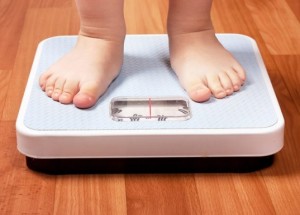 Even if you weren’t aware of the fact that there is a childhood obesity epidemic, you certainly can look around and see for yourself. In the 1960’s in the United States, the percentage of obese children was 5% of the population. Today, that number is a staggering 17% of the population. And nearly one-third of the childhood population is overweight. The consequences of childhood overweight and obesity include health issues and social/emotional costs. The outward appearance of overweight and obese children is enough of a tragedy, but what is going on inside of their bodies is now becoming a health catastrophe.
Even if you weren’t aware of the fact that there is a childhood obesity epidemic, you certainly can look around and see for yourself. In the 1960’s in the United States, the percentage of obese children was 5% of the population. Today, that number is a staggering 17% of the population. And nearly one-third of the childhood population is overweight. The consequences of childhood overweight and obesity include health issues and social/emotional costs. The outward appearance of overweight and obese children is enough of a tragedy, but what is going on inside of their bodies is now becoming a health catastrophe.
When most of us hear the words “Heart Disease”, “Stroke”, “Type 2 Diabetes”, we tend to associate them with people over 50 if not older. There was a time when type 2 diabetes was called mature onset diabetes because it only occurred in older individuals. But much to everyone’s surprise, we are seeing these “adult” diseases manifesting themselves in children. The situation is now so pronounced, that pediatricians have had to relearn about adult diseases manifesting themselves in children. This is all very frightening, yet and we all end up with heart ache after these illnesses set in.
What is causing childhood obesity to manifest itself in ways not seen by previous generations? Although there are those who like to blame genes, what has happened over the last generation has happened to quickly to be blamed on some genetic mutation. We must look at the way we live to get the answers. How do we get to work or school? What and how much are we eating for meals and snacks? And while genetic factors certainly put some children at higher risk than others, the widening of our waistlines, adults and children alike, comes down to lifestyle and habits.
Overweight children
The concerns for children who are overweight children are not just aesthetic. There isn’t one major organ of the body which isn’t affected. Complications include asthma, sleep apnea, gallstones, liver dysfunction, bone fractures and girls can become infertile. Really, all of the complications of adult obesity, like type 2 diabetes, high blood pressure, abnormal cholesterol and metabolic syndrome are present in obese children.
 Aside from the physical aspect of obesity, even the most resilient and motivated children suffer social consequences. Obese children are more likely to be teased, bullied and socially isolated than normal weight children. In a review of 131 research articles evaluating the association of overweight children and mental health and wellness found increased instance of depression and anxiety along with low self-esteem. In addition, disordered and unhealthy eating are common.
Aside from the physical aspect of obesity, even the most resilient and motivated children suffer social consequences. Obese children are more likely to be teased, bullied and socially isolated than normal weight children. In a review of 131 research articles evaluating the association of overweight children and mental health and wellness found increased instance of depression and anxiety along with low self-esteem. In addition, disordered and unhealthy eating are common.
The need for change is obvious, but what is it we need to do and how do we go about it? It is making small but progressive and consistent changes to our lifestyle that will make the biggest difference. These changes need to occur both at home and in school and parents need to take the lead by setting a good example.
Treats?
When it comes to food and eating, don’t deny your child the occasional treat that but rather limit them and always provide healthy alternatives. When your child gets home from school, vegetable sticks and cut up fruit should be out on the table for them. At first they may resist, but they will eventually come around and partake. Plan the treat per day the night before and let them understand they only get one and therefore they should enjoy it.
It is a good idea for the parent to sit with a dietician once or twice to fully understand what healthy eating entails so they know what to teach their children and how to help them succeed. There are so many misconceptions about what proper, healthy eating is. Go to an expert and don’t do something extreme, or it will backfire.
Activity
For children, it is activity which can make the biggest difference. Start by having your child walk or bike to and from school. Have them get on and off buses a stop one or two stops form the bus stop. Use stairs and not elevators. Schools must be encouraged to incorporate physical activity into the school day. It doesn’t have to be competitive sports if that is problematic. Formal programs are needed in the schools to introduce exercise and activity into our children’s lives.
By being the proper example as parents and getting the schools involved (encouraging activity and limiting junk food in the school) we can save the lives of OUR CHILDREN before it is too late. Dealing with overweight and obesity in our children before it is too late will “add hours to their days, days to their years, and years to their lives.”

Leave A Comment